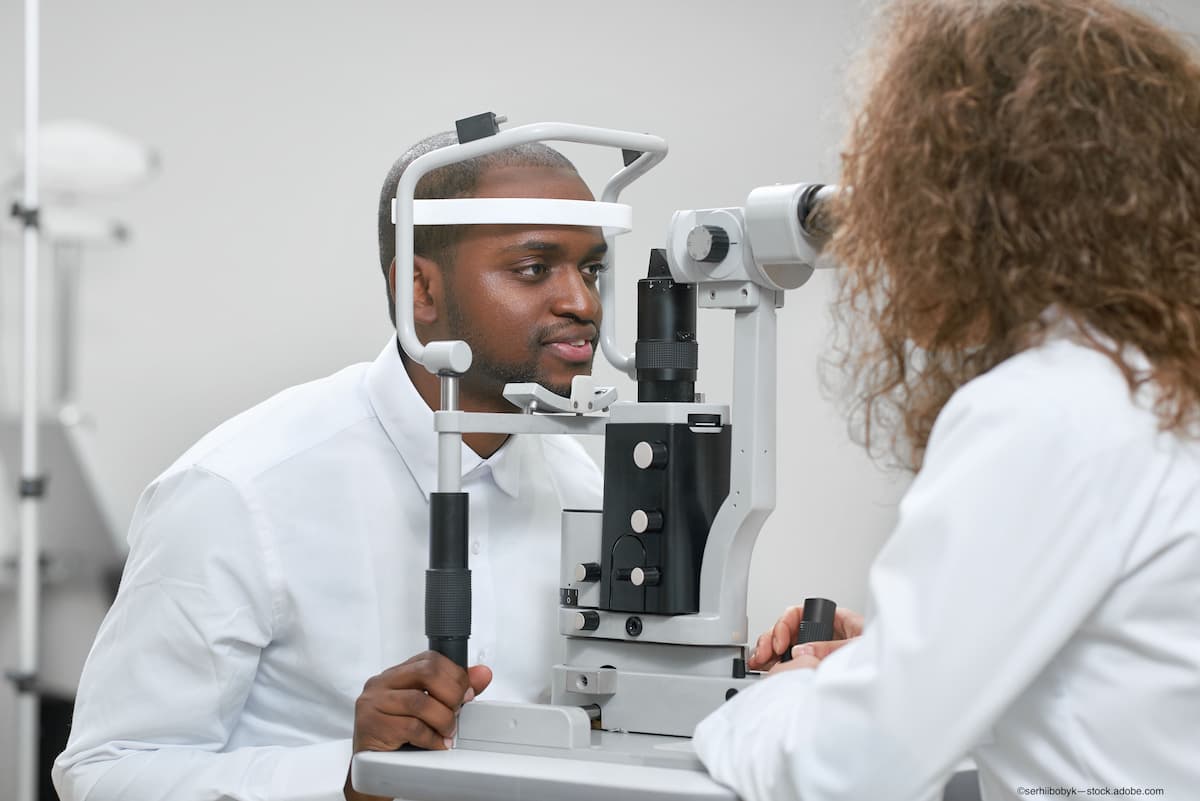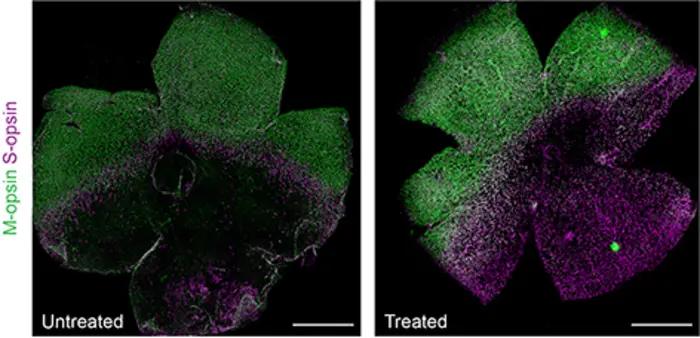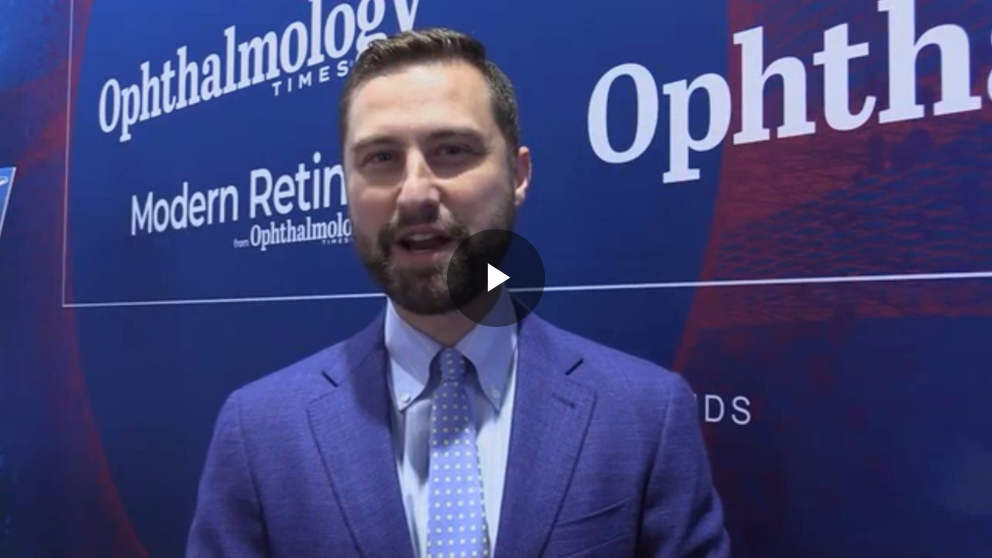This week in retina: April 8-14
An end-of-week review of retina news and stories from April 8-April 14.

This week in retina, we saw new trials begin, study results emerge, and new initiatives take hold. One study reported that patients with neovascular age-related macular degeneration lost vision following lockdowns and treatment reductions due to the COVID-19 pandemic. In diabetic eye disease news, a trial begins to study DME in underrepresented populations, and evidence suggests that bariatric surgery may reduce diabetic retinopathy risk.
Base editing emerges as a durable, one-time treatment for inherited retinal degeneration, and the first pediatric patient was dosed in a clinical trial for gene editing for the treatment of LCA10.
The International Agency for the Prevention of Blindness (IAPB) unveiled their plans for "Focus on Child Eye Health," and the International Center for Materials Nanoarchitectonics revealed data about the first artificial retina to increase edge contrast.
Outcomes of anti-VEGF therapy for retinal diseases altered by COVID-19 lockdown
Javier Zarranz-Ventura, MD, PhD, FEBO, from the Institut Clínic of Ophthalmology, Hospital Clínic and the August Pi i Sunyer Biomedical Research Institute, Barcelona, Spain, and colleagues from the Fight Retinal Blindness Registry, found that patients with neovascular age-related macular degeneration (AMD) in all countries included in the study lost vision as a result of the lockdown and reduced number of treatments during the COVID-19 pandemic.
This group conducted an international database study that included 5,782 eyes of 4,708 patients who were being treated with anti-vascular endothelial growth factor injections before, during, and after the pandemic lockdown. Patients from 8 countries were included and in addition to neovascular AMD, those with diabetic macular edema (DME) and retinal vein occlusion (RVO) were included in the analysis.
The investigators reported that 4,649 eyes with neovascular AMD had decreased vision in all countries.
Trial to study treatment of DME in underrepresented patients begins
The Elevatum trial of Vabysmo (faricimab-svoa, Genentech, Inc.), an anti-VEGF drug, has begun, according to company representatives. The trial will study the effect of the drug in treatment-naïve patients with diabetic macular edema (DME) who are members of underrepresented patient populations, ie, Black, Hispanic, Latin American, and Indigenous people.
According to the company, the study was designed specifically “to ease the barriers to clinical trial participation faced by underrepresented racial and ethnic groups. That includes broadening eligibility criteria which could inadvertently exclude patients from various racial groups, ensuring diverse clinical site leaders, and providing transportation and other resources and services to make trial participation easier for people. The overall goal of the study is to better understand how these traditionally underrepresented patient populations with DME respond to treatment in order to help deliver better, more equitable care.”
Bariatric surgery may reduce diabetic retinopathy risk
Diabetic retinopathy (DR) is a threat to vision in patients with type 2 diabetes, and a cause of lost sleep for ophthalmologists when they can’t save patients’ vision.
A bright spot is that bariatric surgery is an effective treatment for obesity in patients with type 2 diabetes. It can induce remission of the diabetes and reduce other microvascular complications, according to Caberry Weiyang Yu, MD, of the Division of Ophthalmology, Department of Surgery at McMaster University in Toronto, and colleagues.
One drawback may be the suggestion that DR can worsen after bariatric surgery as a result of the rapid improvement in hyperglycemia, but this is not yet definitive, according to Yu.
First pediatric patient dosed in LCA10 gene editing clinical trial
This week, Editas Medicine Inc. announced the administration of EDIT-101, an experimental CRISPR gene editing medicine, to the first pediatric patient enrolled in the Brilliance clinical trial, which is designed to test the safety of EDIT-101 for the treatment of Leber congenital amaurosis 10 (LCA10), a CEP290-related group of inherited retinal degenerative disorders caused by mutations in at least 18 different genes. It is the most common cause of inherited childhood blindness, with an incidence of two to three per 100,000 live births worldwide.
According to the company, this marks the world’s first in vivo dosing of a pediatric patient with a CRISPR gene editing experimental medicine.
UCI study cites base editing as a durable one-time treatment for inherited retinal degeneration
A University of California, Irvine-led study indicates base editing may provide long-lasting retinal protection and prevent vision deterioration in patients with inherited retinal degeneration, specifically in Leber congenital amaurosis (LCA) patients.
“Our findings demonstrate the tremendous potential of base editing,” senior author Krzsztof Palczewski, PhD, Donald Bren Professor of Ophthalmology at the UCI School of Medicine, said in a news release. “If scientists align behind this approach, there is a chance that in 10 years, all inherited retinal diseases could be treatable.”
According to the university, the study, “In vivo base editing rescues cone photoreceptors in a mouse model of early-onset inherited retinal degeneration,” was published in Nature Communications.
"Focus on Child Eye Health" presented by International Agency for the Prevention of Blindness
The International Agency for the Prevention of Blindness (IAPB) recently announced an expansion of their ‘Focus on Glaucoma’ and ‘Focus on Diabetes’ series with their new ‘Focus on Child Eye Health’ series in partnership with CooperVision.
With last year’s UN Resolution for Vision reinforcing the links between eye health and the UN Sustainable Development Goals, ‘Focus on Child Eye Health’ will take an in-depth look at SDG 4 (Quality Education). IAPB’s school of eye health working group will be highlighting their progress and raising the issues of child eye health with decision makers to push for sight tests and school vision screenings for children around the world.
Commenting on this year’s plans, IAPB’s Chief Executive Peter Holland said in a press release, “We know that there is a lot of great work happening to improve child eye health. IAPB members, patrons and others in the sector have amazing initiatives that are continuously advancing this area and we look forward to learning, sharing and contributing to this work.”
Artificial retinal device increases edge of contrast, mimics human optical illusions
A team at the International Center for Materials Nanoarchitectonics (WPI-MANA) has developed the first-ever artificial retinal device that increases the edge contrast between lighter and darker areas of an image, using ionic migration and interaction within solid.
According to the center, the team built a multiple ionic device system, each of which had a lithium cobalt oxide channel arranged on a common lithium phosphorus oxynitride electrolyte. Because of the migration of Li-ions between the channels through the electrolyte, the devices were highly interactive, similar to human retinal neurons such as photoreceptors, and horizontal and bipolar cells. Input voltage pulses caused ions within the electrolyte to migrate across the channels, which changed the output channel current.




.png&w=3840&q=75)













